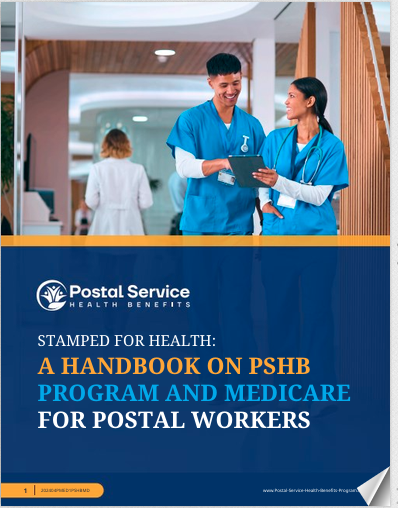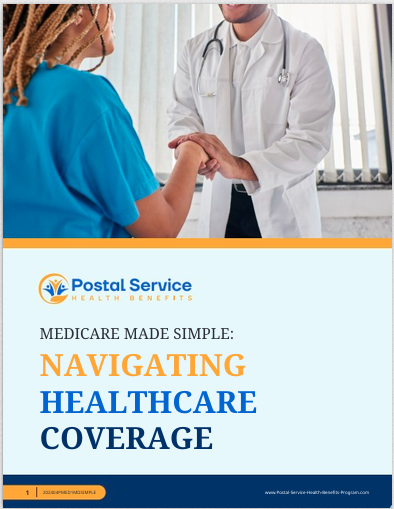Key Takeaways:
- Combining PSHB and Medicare can enhance healthcare coverage and reduce overall costs for Postal Service employees and retirees.
- Understanding how PSHB and Medicare work together is essential for making informed decisions about your healthcare.
Discover the Benefits of Combining PSHB with Medicare: Is It Right for You?
Combining the Postal Service Health Benefits (PSHB) program with Medicare can offer significant advantages for Postal Service employees and retirees. This article explores how these two programs can work together to provide comprehensive coverage, reduce costs, and enhance overall healthcare.
What’s PSHB All About?
The Postal Service Health Benefits (PSHB) program is designed to meet the specific needs of Postal Service employees, retirees, and their families. Launching in 2025, PSHB operates under the broader Federal Employees Health Benefits (FEHB) program but is tailored exclusively for the Postal Service community.
PSHB offers a variety of health plans that include medical, dental, and vision coverage. These plans are structured to ensure that Postal Service employees and retirees receive the healthcare they need, while also providing flexibility to choose the best plan for their specific needs. Understanding PSHB is the first step in realizing how it can be combined with Medicare to offer even better coverage.
Getting to Know Medicare
Medicare is a federal health insurance program primarily for individuals aged 65 and older, although it also covers some younger people with disabilities. Medicare is divided into several parts:
- Medicare Part A: Covers inpatient hospital stays, care in a skilled nursing facility, hospice care, and some home health care.
- Medicare Part B: Covers certain doctors’ services, outpatient care, medical supplies, and preventive services.
- Medicare Part C (Medicare Advantage): An alternative to Original Medicare that allows beneficiaries to receive their Part A and Part B benefits through private health plans.
- Medicare Part D: Covers prescription drugs.
Understanding these components is crucial for Postal Service employees and retirees, especially when considering how to integrate these benefits with the PSHB program for optimal coverage.
How PSHB and Medicare Work Together
Combining PSHB with Medicare can provide a more comprehensive and cost-effective healthcare solution. Here’s how these programs can complement each other:
- Primary and Secondary Coverage: When you have both PSHB and Medicare, Medicare typically becomes your primary insurance, and PSHB serves as your secondary insurance. This means that Medicare pays first for your medical expenses, and PSHB covers some or all of the remaining costs. This coordination of benefits can significantly reduce out-of-pocket expenses.
- Broader Coverage: PSHB plans often include benefits that Medicare does not, such as dental and vision care. By having both PSHB and Medicare, you can ensure that you are covered for a wider range of services and treatments.
- Lower Costs: With Medicare as your primary insurance, many of your medical costs will be covered. PSHB can then cover additional costs, such as copayments, coinsurance, and deductibles, which can lead to substantial savings.
Is Combining PSHB and Medicare Right for You?
Deciding whether to combine PSHB with Medicare depends on several factors, including your healthcare needs, financial situation, and personal preferences. Here are some considerations to help you make an informed decision:
- Healthcare Needs: If you have ongoing health issues or require frequent medical services, combining PSHB and Medicare can provide comprehensive coverage and reduce your out-of-pocket costs.
- Financial Situation: While Medicare Part A is typically premium-free, Part B requires a monthly premium. Weighing the costs of Medicare premiums against the potential savings from reduced medical expenses is crucial.
- Personal Preferences: Some people prefer the simplicity of having one primary insurance provider, while others appreciate the additional coverage and security that comes from having both PSHB and Medicare.
Key Benefits of Merging PSHB with Medicare
Combining PSHB with Medicare offers numerous benefits, including:
- Comprehensive Coverage: By integrating both programs, you can access a broader range of healthcare services, including those not covered by Medicare alone, such as dental and vision care.
- Cost Savings: Coordinated benefits mean that Medicare covers a significant portion of your medical expenses, and PSHB picks up the rest. This reduces your overall healthcare costs and protects you from high out-of-pocket expenses.
- Simplified Billing: With Medicare as your primary insurance and PSHB as your secondary, the billing process becomes more straightforward. You are less likely to face multiple bills for the same service, and coordination of benefits ensures that payments are handled efficiently.
Common Concerns and Questions Answered
Do I Need to Enroll in Medicare?
Yes, if you are eligible for Medicare, enrolling in both Part A and Part B is essential to maintain your PSHB coverage. Failing to enroll can result in losing your health benefits under PSHB and facing late enrollment penalties.
How Do PSHB and Medicare Coordinate Benefits?
Medicare typically acts as your primary insurance, covering most of your medical costs. PSHB then serves as secondary insurance, covering remaining costs such as copayments and deductibles. This coordination helps minimize out-of-pocket expenses.
What If I Don’t Enroll in Medicare Part B?
Not enrolling in Medicare Part B when eligible can result in losing your PSHB coverage. Additionally, you may face late enrollment penalties, increasing your monthly premiums. It is crucial to enroll in Medicare Part B to ensure continued coverage and avoid penalties.
Steps to Enroll in PSHB and Medicare
Enrolling in both PSHB and Medicare involves several steps:
- Review Your Options: Understand the different PSHB plans available and how they integrate with Medicare. Choose a plan that best suits your healthcare needs and budget.
- Enroll in Medicare: Enroll in Medicare Part A and Part B during your initial enrollment period (three months before you turn 65 and lasting for seven months). If you miss this period, special enrollment periods (SEPs) are available.
- Enroll in PSHB: Sign up for a PSHB plan during the designated open season or special enrollment periods. Ensure that your chosen plan complements your Medicare coverage.
- Coordinate Your Benefits: Once enrolled, coordinate your benefits by informing your healthcare providers that Medicare is your primary insurance and PSHB is your secondary. This ensures that claims are processed correctly and benefits are maximized.
Making the Most of Your Combined Coverage
To maximize the benefits of combining PSHB and Medicare:
- Stay Informed: Keep up-to-date with announcements from USPS, OPM, and Medicare regarding enrollment periods and coverage changes.
- Utilize Available Resources: Take advantage of the resources and support offered by USPS, OPM, and Medicare to understand your options and make informed decisions.
- Plan Ahead: Start the enrollment process early to ensure you meet all deadlines and avoid any lapses in coverage.
- Monitor Your Coverage: Regularly review your coverage to ensure it meets your needs. Make adjustments during open season if necessary to maintain optimal benefits.
Enhancing Your Healthcare with Combined Coverage
Combining PSHB and Medicare provides a powerful solution for comprehensive and cost-effective healthcare coverage. By understanding how these programs work together, Postal Service employees and retirees can significantly reduce their healthcare costs and enjoy enhanced benefits. Staying informed, planning ahead, and utilizing available resources are key to making the most of this integrated coverage.
Understanding the importance of staying enrolled in Medicare Part B cannot be overstated. Failure to enroll in Medicare Part B can result in the loss of PSHB coverage and potential late enrollment penalties, which can significantly increase healthcare costs over time. Therefore, it is critical for Postal Service employees and retirees to adhere to the enrollment guidelines and timelines provided.
The combination of PSHB and Medicare not only offers cost savings but also provides access to a broader range of healthcare services. This includes additional benefits such as dental and vision coverage, which are not typically covered by Medicare Part B alone. The coordinated billing process further simplifies the management of healthcare expenses, ensuring that beneficiaries have a seamless experience when accessing medical services.
Postal Service employees and retirees should also take advantage of the Special Enrollment Periods (SEPs) and other resources provided by USPS, OPM, and Medicare to ensure they are fully aware of their options and can make the best decisions for their healthcare needs. Staying proactive and informed is essential to maximizing the benefits of this combined coverage.
Contact Information:
Email: [email protected]
Phone: 6155552345







